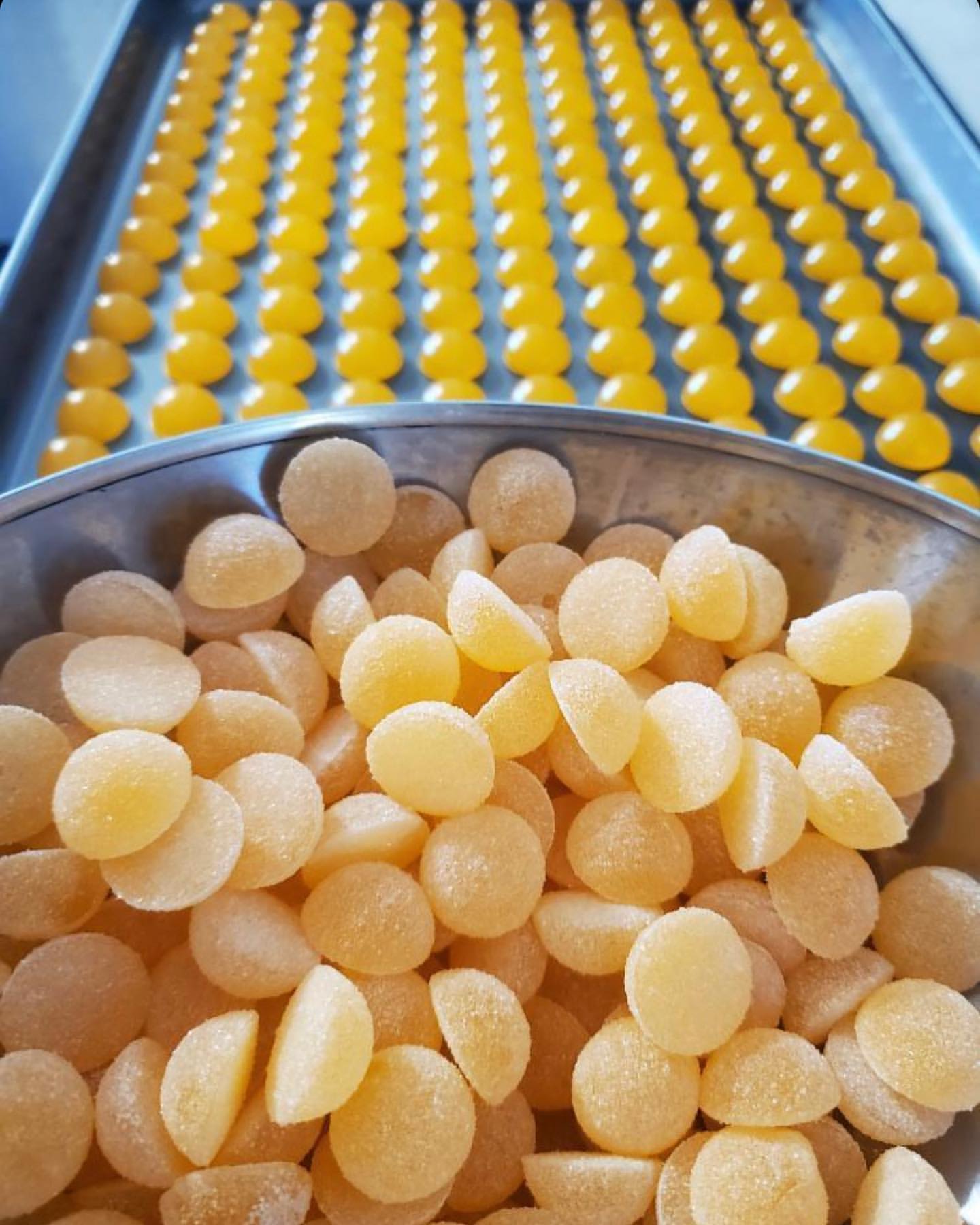So you want to have a gummy-making process worth scaling - that can build a product worth buying?
You have to prioritize meters.
When thinking of crucial gummy making equipment, your mind may leap to a fancy gummy bear machine, an industrial cooker, or a high-end depositing system.
But while these tools are definitely nice to have, they are far from the most important.
Instead, invest early in the right small scale gummy making equipment – like meters – that will set your operation on the right trajectory as you grow and expand your library of SKUs.
Gummy kitchens are like chemistry labs, and you have to think like a scientist to troubleshoot issues as they arise. Sweaty, sticky, bland or otherwise problematic gummies are unfortunately not uncommon in the R&D phase.
Achieving shelf-stability for your product is an exact science. And like any good scientist– you're going to need data.
Access to the right meters is a baseline necessity for you to identify root causes of all of the above issues and more. So when you do spring for that high-end depositor, you can be confident you have a product worth depositing.
So which meters are going to be the most important for you to implement in your gummy operation?
Read on to find out.
1. pH Meter
The pH meter is going to be especially applicable if you're making pectin gummies.
Your pH meter will provide information on your recipe’s acidity. And for pectin-based recipes, acidity is absolutely crucial for fine-tuning your process.
Pectin gummies cure and solidify, not as a result of simple desiccation (drying out), as is the case with gelatin-based recipes. (Though use of pH meters with gelatin is also highly valuable, especially when dialing in your flavor profile.)
Pectin is highly pH and ion-sensitive, and its curing process is determined by the mixture’s overall acidity.
So clearly, it is necessary to produce accurate readings of the acidity of your slurry. This information will determine your set rate, your pour life, and other important factors.
2. Brix Meter (Refractometer)
Next up is the Brix meter. This is applicable to both pectin and gelatin recipes, and provides a percentage measurement of the soluble solids (mostly sugars) in your slurry.
Here’s a fun fact:
Brix meters are generally referred to as refractometers. This is because as mixtures attain higher percentages of solids, light “refracts” - or bends - more as it passes through the mixture.
Brix meters feature a light-sensitive sensor and measure the degree of this refraction.
Think of this as a measure of the “thickness” of your slurry. It has significant implications for how to make your gummies not sticky.
Practically speaking, this read-out provides the information required to determine when to pour your slurry.
3. Water Activity Meter
Last but not least among our top-3 necessary meters is: the water activity meter.In the cooking and curing process for gummies, at the chemical level, water breaks down and re-bonds to the hydrocolloid (gelatin or pectin), humectant, solid sugars, and other ingredients to form the familiar semi-solid texture of a gummy.
Too much water, and the excess is not properly incorporated into the newly formed gummy chemistry, but nevertheless remains inside the gummy.
This “rogue” water inside of your gummies can cause a wave (pun intended) of issues down the line as you scale operations and begin to package, store, and ship your product.
Sweating gummies and mold are the bane of every gummy start-up’s existence. These issues will wreck your reputation.
So, how to avoid them?
Enter the water activity meter.
Your WA meter tells you how much of this unbonded, rogue water is inside of your gummy, which will help you determine when that gummy is stable enough to package.
–
Knowing which meters you’ll need is one thing - actually using them is another.
This is why we’ve created the Gold Standard Recipes & SOPs. These are stable, repeatable frameworks to help you structure your R&D most effectively.
Check them out today for more insight into the foundations of gummy recipe formulation.
PLUS detailed explanations when to use your pH, brix, and water activity meters– and what measurements to aim for.
Because if you incorporate these three meters into your process – and you know how to best use them – you can't go wrong.




